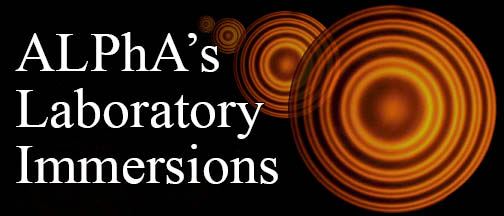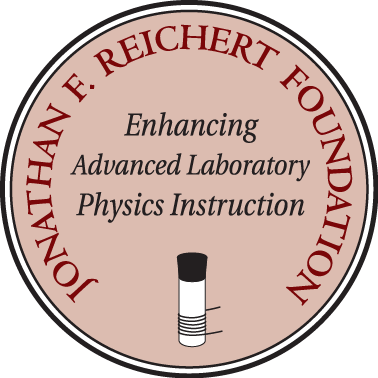- Home
- What We Do
- Laboratory Immersions
- Immersions 2025
- Imm2025Chicago_PET
University of Chicago, Chicago, IL
FPGA-Based Positron Emission Tomography (PET)
July 17, 2025 to July 18, 2025
Number of setups available: 2
Maximum number of participants: 4
------------------------------------------------------------------------------------------------------------------------------------------
 Positron Emission Tomography (PET) is a medical imaging technique which is commonly used to map out metabolic activity in the body. Typically, a β+-emitting (positron-emitting) radionuclide (such as 18F) attached to a glucose molecule is injected into the body where it is taken up by tissues in proportion to their metabolic activity. Positrons produced by the decay of the radionuclide usually travel less than 1 mm in human tissue before they bind with an electron and quickly annihilate. Most of the positron-electron annihilations result in the emission of a back-to-back pair of 511 keV photons. These photon pairs leave the body and can be detected. Areas of the body where there is high metabolic activity – such as cancer cells or active regions in the brain – will be more intense emitters of these 511 keV photon pairs. In a PET scanner, arrays of scintillator+PMT detectors are used to measure the intensity of this radiation along well defined planes (referred to as slices) passing through the patient's body.
Positron Emission Tomography (PET) is a medical imaging technique which is commonly used to map out metabolic activity in the body. Typically, a β+-emitting (positron-emitting) radionuclide (such as 18F) attached to a glucose molecule is injected into the body where it is taken up by tissues in proportion to their metabolic activity. Positrons produced by the decay of the radionuclide usually travel less than 1 mm in human tissue before they bind with an electron and quickly annihilate. Most of the positron-electron annihilations result in the emission of a back-to-back pair of 511 keV photons. These photon pairs leave the body and can be detected. Areas of the body where there is high metabolic activity – such as cancer cells or active regions in the brain – will be more intense emitters of these 511 keV photon pairs. In a PET scanner, arrays of scintillator+PMT detectors are used to measure the intensity of this radiation along well defined planes (referred to as slices) passing through the patient's body.
Tomography is the process of using slices of data to reconstruct a larger 2d or 3d whole. In this instance, we will use PET to create a two-dimensional image of a sample box containing several positron sources of unknown strength at unknown locations. The same general technique can be used for other processes such as x-ray reflection, x-ray transmission, or light transmission through a sample. All of these may be used as non-destructive methods for probing samples and can be a valuable technique to have in one’s experimental physics toolbox. Our apparatus uses a pair of detectors, a linear actuator, and a rotational motor to automate the lateral motion and rotation of a sample while detecting coincidences. An example of a scan in progress and the corresponding data can be seen here PETV2.avi, sped up by 200 times.
This experiment is designed to be approached from many angles, and as such there are many differing skills that could be gained by students. In its basic form, students would learn about coincidence detection and tomographic reconstruction. There are also straightforward ways to teach topics around analog & digital signal processing, and computerized hardware control. If expanded into a longer form (e.g. senior thesis project), students could learn about fabricating supporting parts for experimentation, FPGA and Python coding, soldering, PWM motor control, and more.
Over the course of this immersion, we will cover how to construct & set up the apparatus, perform the experiment, troubleshoot issues, and analyze the data. There will be opportunities to delve into more specific aspects of setup such as the functioning of the relevant Python or Verilog code, design decisions made in construction, and so forth. It would be preferable if participants brought a laptop capable of running Jupyter Notebooks, but not strictly necessary as we have spares. No specific equipment is needed to participate in the immersion. The radiation sources used are all on the order of μC of activity and pose only a minimal exposure hazard.
The cost of the setup depends slightly on what you already have available. If one already has appropriate PMTs and power supplies, the costs are on the order of $1,000. If 1 kV power supplies are needed, there are plans for them that would cost ~$200 each. New scintillation detectors cost on the order of $1000 each, but used ones may be obtained for substantially less. Some components are 3d printed or laser cut, but nothing that could not be substituted in another way. For a breakdown of parts, see the following spreadsheet: PET scan BoM.
No purchase of proprietary software is required for the experiment. Documentation as well as links to the software are available online via the UCPhysics’ Positron Emission Tomography(PET) laboratory documentation website. When possible, both final outputs and working files are available (e.g. FPGA bitstreams and project files).
Host and Mentor:
 Kevin Van De Bogart was born and raised in Middleton, Idaho. He graduated from Middleton High School in 2004, and continued his education at the University of Idaho. In May 2008, he graduated with a Bachelor of Science in Physics as well as a Minor in Mathematics. He then began graduate studies specializing in the field of quantum computing at the University of Calgary. It was here that he was first introduced to the field of Physics Education Research, and he subsequently began his Ph.D. work at the University of Maine in 2011.
Kevin Van De Bogart was born and raised in Middleton, Idaho. He graduated from Middleton High School in 2004, and continued his education at the University of Idaho. In May 2008, he graduated with a Bachelor of Science in Physics as well as a Minor in Mathematics. He then began graduate studies specializing in the field of quantum computing at the University of Calgary. It was here that he was first introduced to the field of Physics Education Research, and he subsequently began his Ph.D. work at the University of Maine in 2011.
Before coming to UMaine, Kevin had essentially no experience with designing or analyzing electronic devices. However, as a result of his research, he has become an avid hobbyist, and now will attempt to repair, modify, or just disassemble nearly anything with internal circuitry. After completing his Ph.D. on student understanding of analog electronics, he joined the instructional laboratory staff at the University of Chicago in 2018. There he immediately got to work helping to revamp multiple laboratory courses and institute a Learning Assistant program. Kevin strives to make the world a stranger place, sometimes to the chagrin of his friends, family, and coworkers.
Please note that the Jonathan F. Reichert Foundation has established a grant program
to help purchase apparatus used in Laboratory Immersions. Limitations
and exclusions apply, but generally speaking the Foundation may support
up to 50% of the cost of the required equipment.




